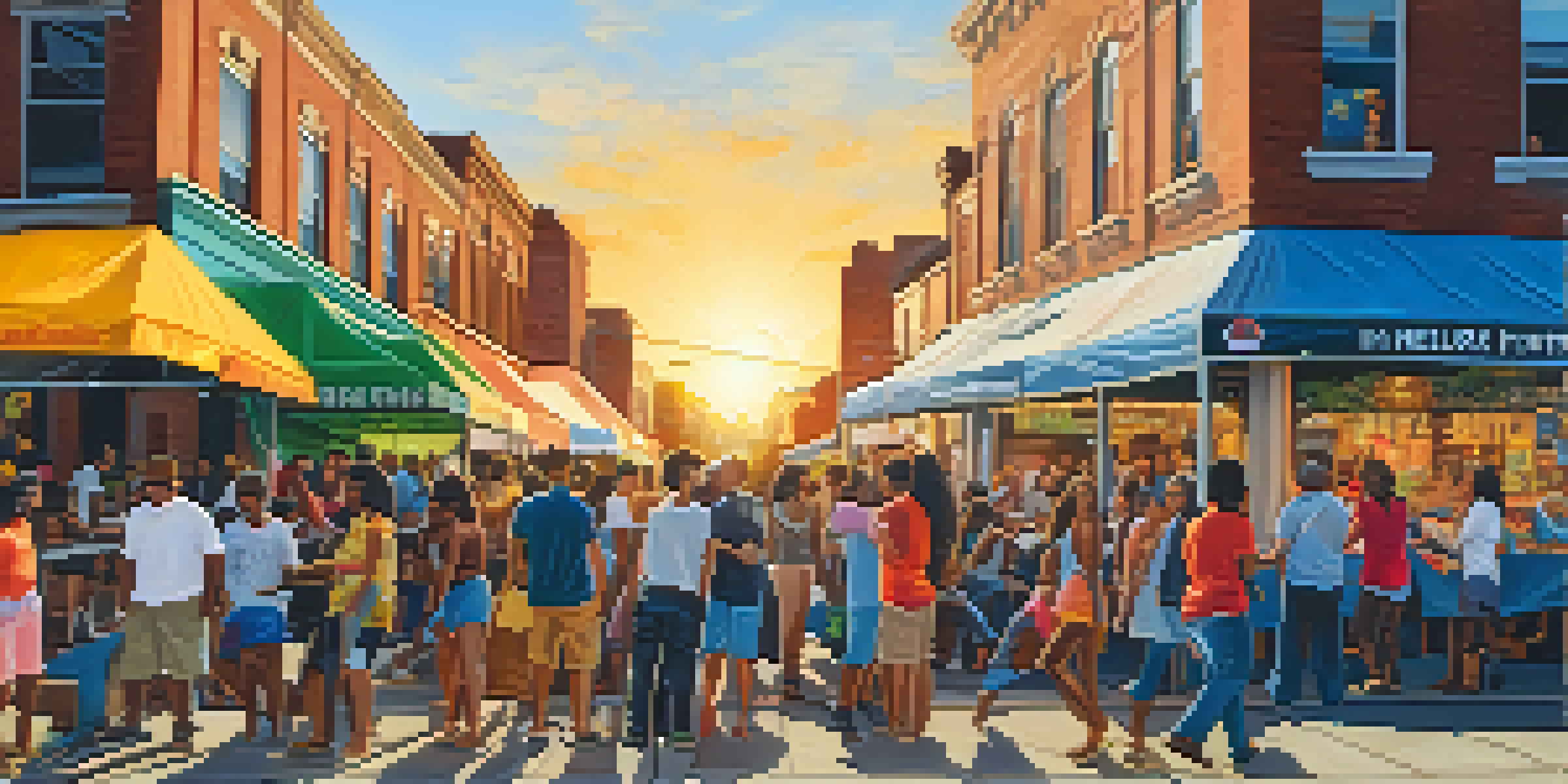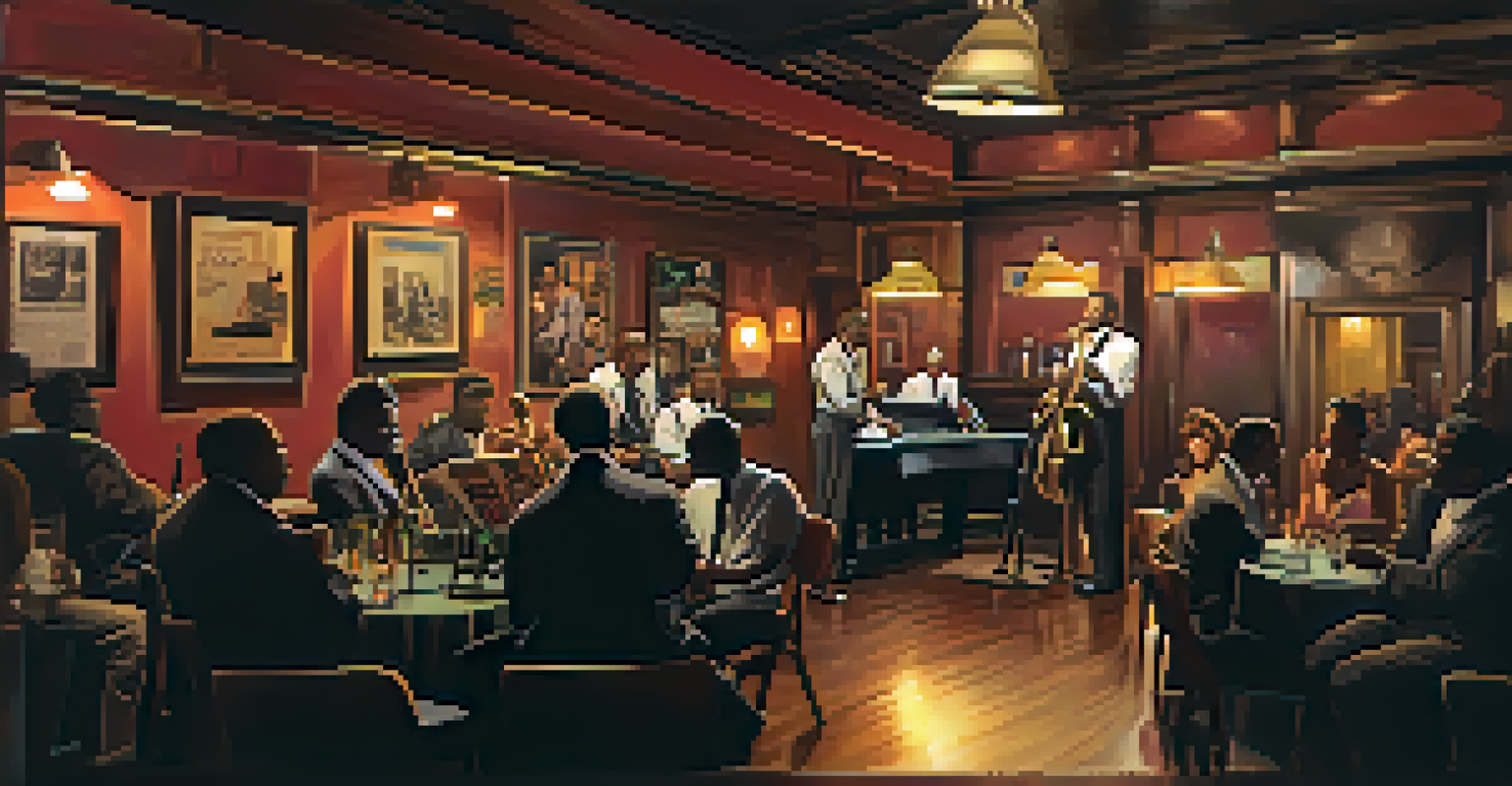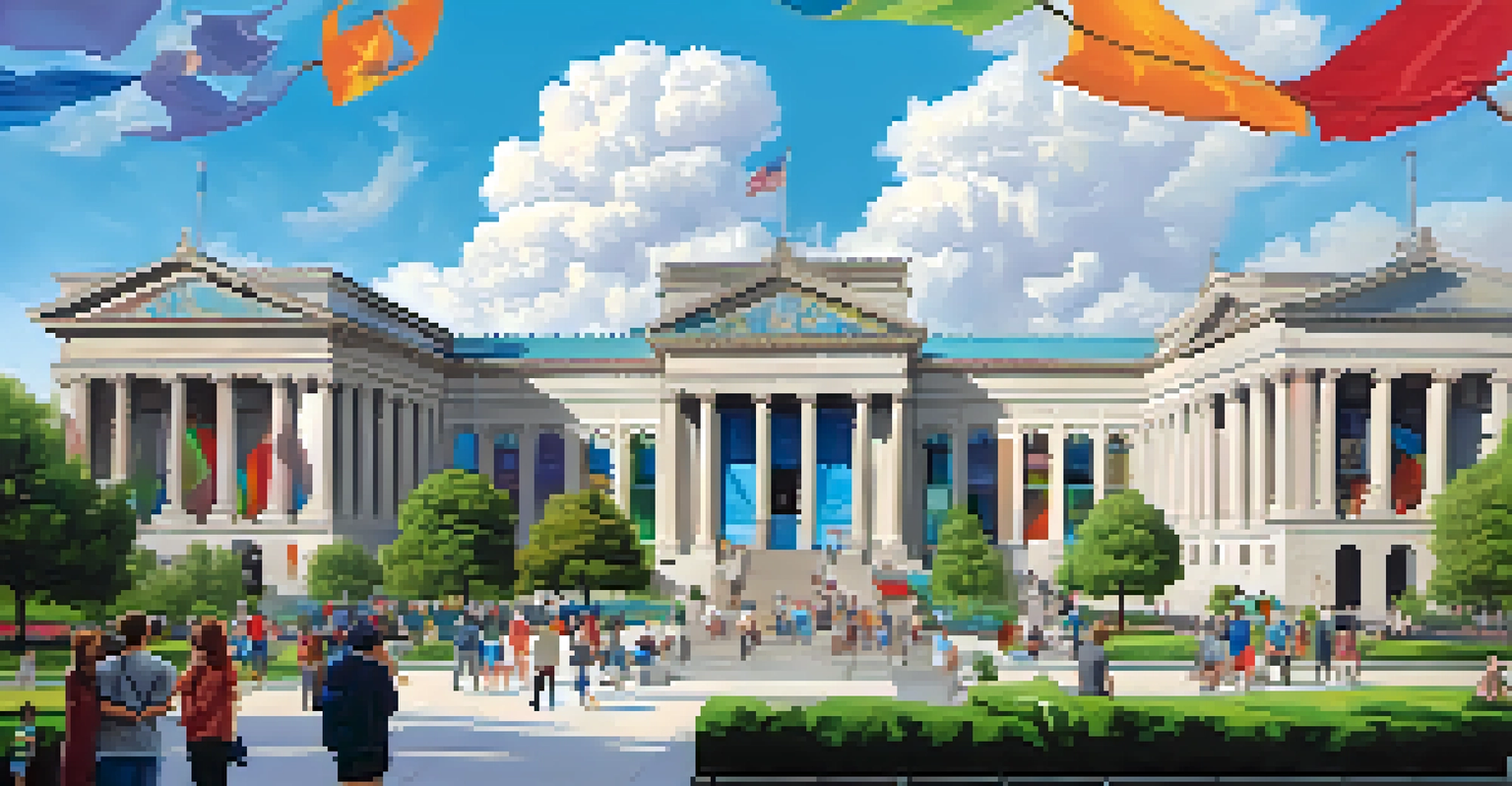Arts and Culture: Newark’s Historical Contributions

The Early Foundations of Newark's Cultural Landscape
Newark's history as one of New Jersey's oldest cities has fostered a vibrant cultural landscape. Established in 1666, the city was initially a Puritan settlement, which laid the groundwork for diverse artistic expressions. As waves of immigrants arrived, they brought their own cultural traditions, enriching the city's identity.
Art is the most beautiful of all lies.
This melting pot of cultures is reflected in Newark's early artistic endeavors, from folk art to religious expressions. The establishment of community centers and churches served as vital hubs for cultural exchange and creativity. These early foundations set the stage for Newark to become a significant player in the arts scene.
Moreover, the city's proximity to New York City has historically influenced its artistic growth, allowing Newark to interact with broader trends while nurturing its unique identity. This blend of influences has made Newark a fertile ground for innovative artistic movements.
The Role of Newark in the Jazz Movement
In the 20th century, Newark emerged as a pivotal location for the jazz movement. Renowned musicians like Sarah Vaughan and Wayne Shorter hailed from the city, showcasing its deep roots in jazz history. The vibrant nightclub scene and cultural institutions played a crucial role in fostering musical talent.

Venues such as the Newark Symphony Hall became stages for legendary performances, attracting crowds and nurturing aspiring artists. Jazz was not just a genre; it was a means of expression for the city's African American community during a time of social upheaval. This rich musical heritage continues to resonate today.
Newark's Rich Cultural Heritage
Newark's vibrant cultural landscape, shaped by its diverse history and immigrant influences, has fostered a dynamic arts scene.
Newark’s annual jazz festivals celebrate this legacy, drawing both local and international artists. These events not only honor the past but also inspire the future generation of musicians, keeping the spirit of jazz alive in the city.
Newark's Influence on Visual Arts
Newark's contributions to visual arts are equally significant, with a vibrant community of painters, sculptors, and photographers. The city's art scene began to flourish during the late 19th and early 20th centuries, with institutions like the Newark Museum leading the way. This museum, one of the largest in the state, showcases a diverse collection that spans centuries and cultures.
The role of the artist is to ask questions, not to answer them.
Local artists have often drawn inspiration from Newark's urban landscape, transforming everyday scenes into stunning works of art. The city's architecture, from historic brownstones to modern skyscrapers, provides an endless canvas for creativity. Public art installations throughout Newark further enhance the city's visual narrative.
Moreover, events like the Newark Arts Festival celebrate local talent and encourage community engagement. These gatherings not only highlight the artists but also foster a sense of pride and connection among residents, reinforcing the city’s cultural fabric.
The Impact of Newark's Theater Scene
The theater scene in Newark has a rich history that continues to thrive today. The Newark Symphony Hall, once a hub for vaudeville, now serves as a venue for a variety of performances, from musicals to spoken word. This historic site has played a significant role in nurturing local talent while also attracting national acts.
Organizations like the Newark Arts Ensemble and the New Jersey Performing Arts Center (NJPAC) contribute to the vibrant performing arts landscape. These institutions not only host performances but also engage the community through workshops and educational programs. This commitment to arts education ensures that future generations appreciate and participate in the theater.
Jazz Legacy and Community Impact
The city has a profound connection to jazz, with significant contributions from local musicians and events that celebrate this musical heritage.
Newark's theater scene also reflects the city's diverse narratives, often showcasing stories that resonate with its multicultural community. This inclusivity enriches the audience's experience and encourages conversations around identity, culture, and social issues.
Celebrating Newark's Literary Heritage
Newark's literary legacy is often overshadowed by its more prominent artistic contributions, yet it is equally rich. The city has been home to influential writers, poets, and thinkers who have shaped American literature. Figures like Amiri Baraka and Philip Roth have roots in Newark, drawing inspiration from its streets and stories.
Local libraries and literary organizations play a vital role in promoting reading and writing within the community. Events such as poetry slams and book fairs create platforms for emerging writers to share their voices. The emphasis on literary arts fosters a culture of storytelling that is deeply woven into Newark's identity.
Additionally, Newark's diverse population brings a myriad of perspectives to the literary scene, enriching the narratives being told. This cultural tapestry encourages a broader understanding of human experiences and highlights the importance of literature in connecting communities.
The Intersection of Arts and Activism in Newark
In Newark, the arts have often intersected with social activism, creating a vibrant dialogue about change and justice. Artists have used their platforms to address pressing social issues, such as racial inequality and economic disparity. This tradition of activism through art is evident in various forms, from murals to performance art.
Community organizations often collaborate with artists to create projects that engage residents and raise awareness about local challenges. For instance, public art initiatives can transform neglected spaces into vibrant community hubs, fostering pride and ownership among residents. This synergy between art and activism not only beautifies the city but also empowers its citizens.
Art as a Tool for Social Change
Artists in Newark have intertwined their work with social activism, using creative expression to address community issues and foster dialogue.
Furthermore, events like the Newark Arts Festival often highlight themes of social justice, encouraging dialogue and reflection. By bridging the gap between art and activism, Newark continues to inspire change while celebrating its rich cultural heritage.
The Future of Arts and Culture in Newark
As Newark continues to evolve, its arts and culture scene remains a vital part of its identity. New initiatives and collaborations are emerging, ensuring that the city’s creative spirit thrives. The revitalization of neighborhoods and investment in cultural institutions reflect a commitment to nurturing the arts for future generations.
Emerging artists are increasingly finding support through grants, residencies, and community programs designed to foster creativity. This investment in the arts not only enriches the local landscape but also attracts visitors and new residents who appreciate the vibrant culture.

Looking ahead, Newark's arts and culture scene is poised for continued growth, with an emphasis on inclusivity and representation. By embracing its diverse heritage, Newark will not only honor its past but also pave the way for a dynamic and innovative cultural future.